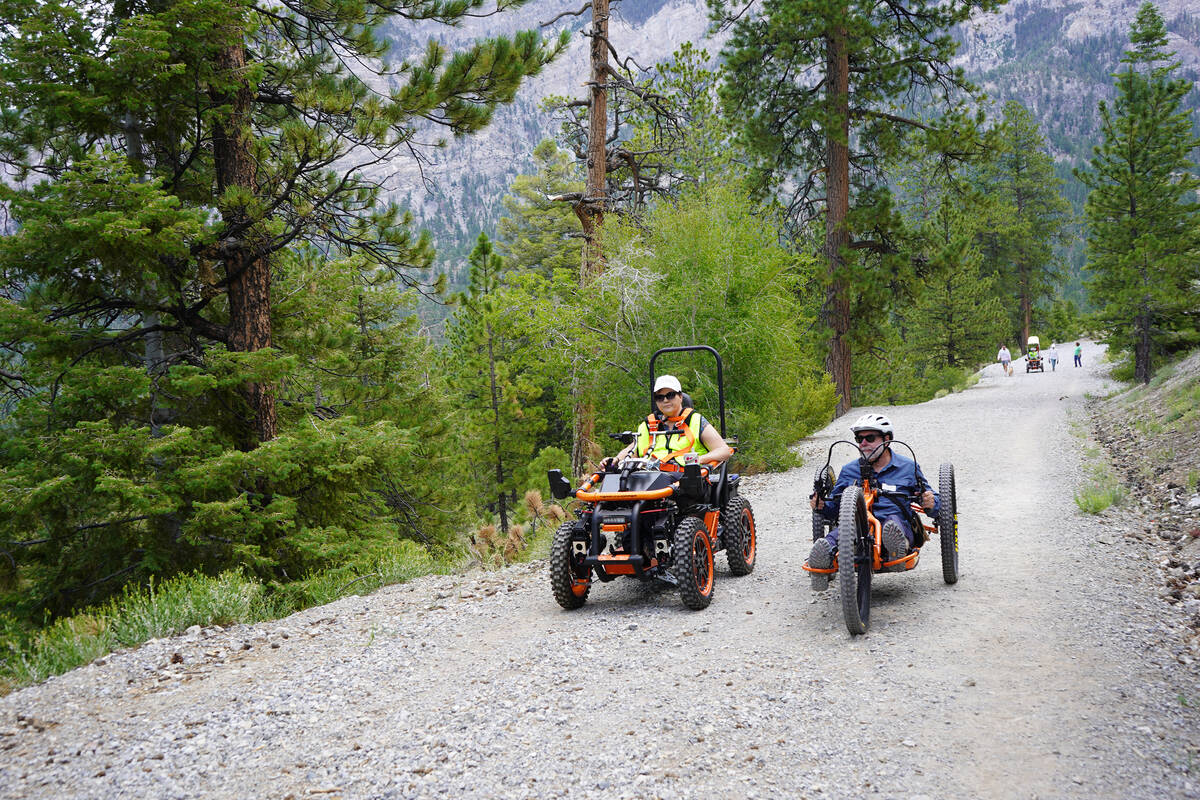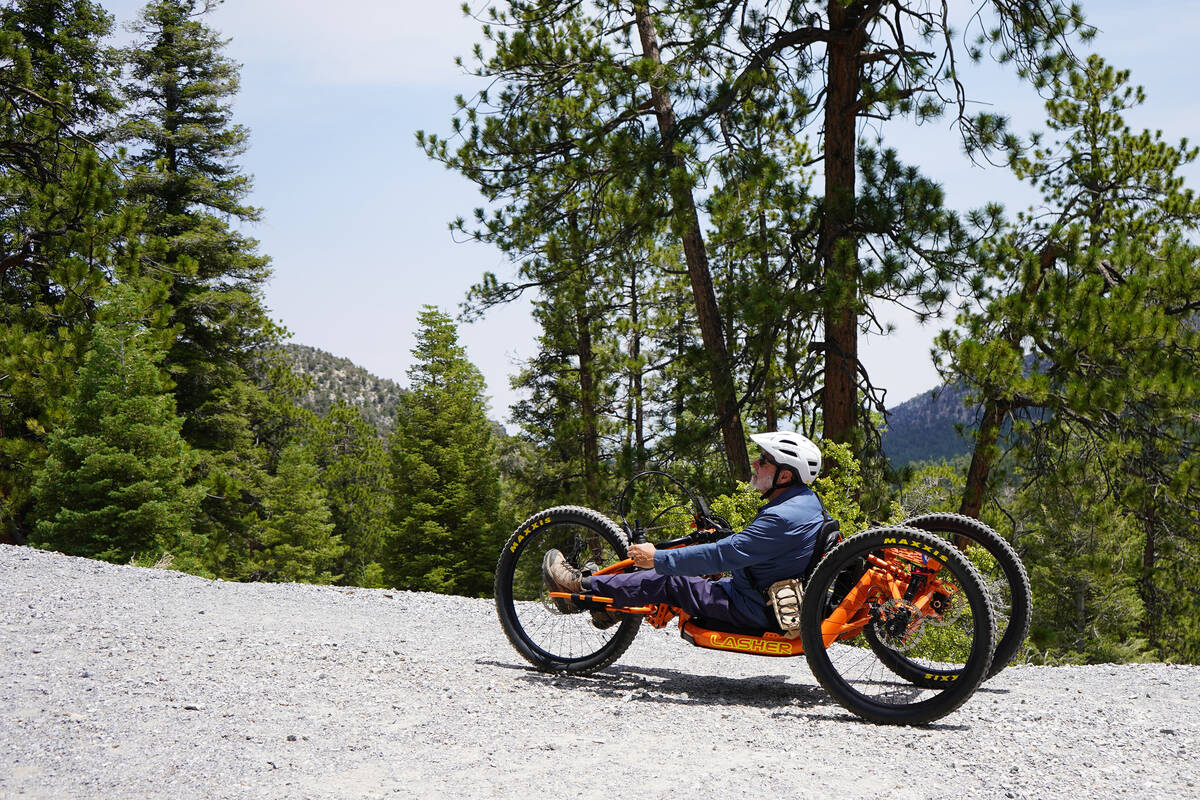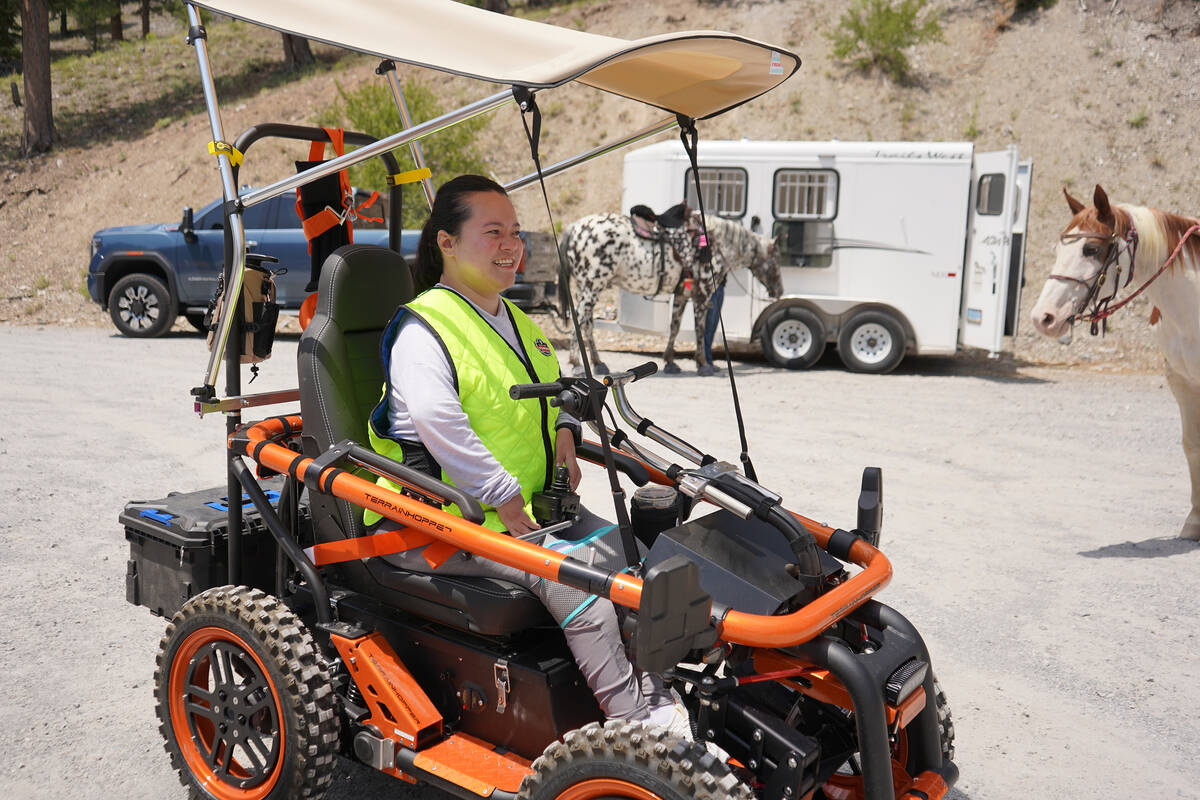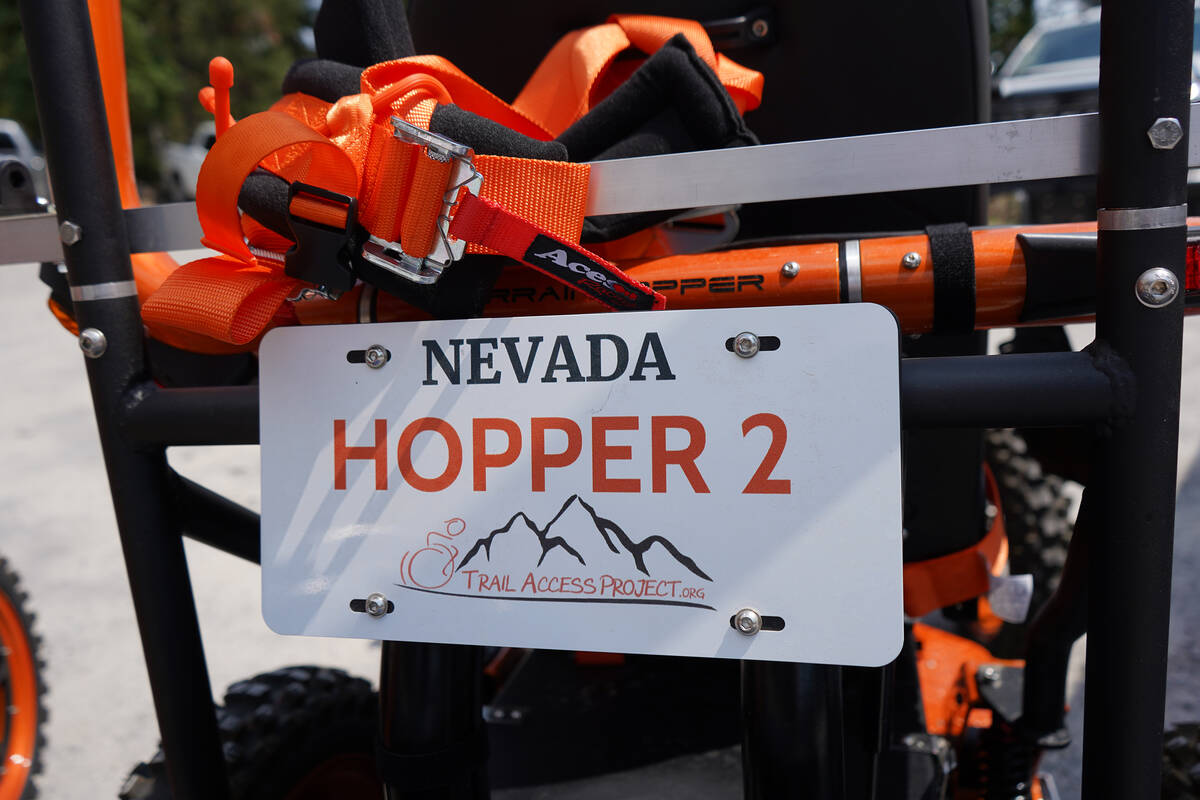Adaptive hiking helps expand trail access for people with disabilities
A mile into her adaptive hike on Mount Charleston’s Lower Bristlecone Trail, Angel Frechette was jubilant about the “pure freedom,” “absolute bliss” and “adrenaline chase” she’d found in the forest.
“We don’t do this enough,” Frechette said. “It’s easy to forget how beautiful it is to be out in nature, how quiet the earth can be, how many beautiful things there are to see.”
Frechette, who relies on a power wheelchair to navigate daily life, was enjoying nature’s sights, smells and sounds on a recent Sunday afternoon from the comfort and utility of a specially designed TerrainHopper. Getting on Southern Nevada’s trails has become more of a possibility for people with disabilities because of motorized off-road mobility devices and volunteer support from the Nevada-based Trail Access Project.
During the past two years, a limited number of TerrainHopper excursions have taken place on trails at Spring Mountains National Recreation Area and Red Rock Canyon National Conservation Area. Advanced registration is required because of limits on adaptive equipment and volunteer manpower, said Ed Price, founder of Trail Access Project. The nonprofit organization has a goal of helping people in wheelchairs gain more access to nature with electric-assisted equipment that can handle rocky terrain.
Trail Access Project has only two TerrainHoppers but soon will add two electric-assisted handbikes that allow passage on rugged trails.
Outdoor connection
Since 2022, the organization also has coordinated larger gatherings at Southern Nevada parks and public lands with accessible, mostly paved paths that are fairly flat. Those locations, where participants rely on their own wheelchairs, have included Corn Creek field station at Desert National Wildlife Refuge, Lake Mead’s historic railroad tunnels, Springs Preserve, Henderson Bird Viewing Preserve and Lone Mountain Regional Park.
In the past, anywhere from eight to 16 participants in wheelchairs might show up with at least a dozen more caregivers joining the gathering.
“We emphasize helping people get out on the trails and out in nature,” said Price, a retired geologist and former professor at Nevada State College whose mobility is limited by post-polio syndrome.
In addition to providing access to specialized equipment, Trail Access Project works with governmental entities to lift barriers on public lands, when possible, to increase hiking opportunities for people in wheelchairs. This year, such efforts helped bring accessibility improvements to Oak Creek trailheads along state Route 159 in Red Rock Canyon National Conservation Area.
‘It’s really cool’
Navigating a shiny burnt orange TerrainHopper on Lower Bristlecone Trail in July, Michelle Heinze said Trail Access Project has helped her expand the number of recreational activities she can enjoy.
She said Price’s work has added quality to the lives of disabled Southern Nevadans with limited opportunities for recreational and sporting activities. In Nevada, it’s been hard to find adaptive versions for adventure sports, such as kayaking, water skiing and off-road biking, Heinze said, adding that she’s pursued those opportunities in Arizona.
On the hiking trail at Mount Charleston, Heinze said, “I feel like you forget about your limitations. You get to enjoy being out in nature, doing things other people might take for granted.”
She said her mood lifted and her outlook improved after 15 minutes of trekking across an uneven path and under the shade of towering ponderosa pines.
“Some of this stuff I never thought I’d be able to do again,” said Heinze, who suffered a spinal cord injury at age 19. “It’s really cool that Ed started this because we get to enjoy recreation and be out in nature.”
Experiencing nature
The TerrainHoppers, which were purchased with grant money earmarked for Trail Access Project, are part motorized wheelchair and part all-terrain vehicle with handlebars or a joystick, if needed, for steering and stopping. The assistive vehicles travel a maximum of 4 mph.
Price attached a shade to one of the TerrainHoppers after spotting add-on equipment made for tractors while shopping online. “We learn from our participants at every event and figure out what they might need next time,” he said about the modifications and improvements he continually makes.
Frechette, whose mobility limitations are a result of arthrogryposis multiplex congenita, said Price’s work adds happiness and hope to those in Southern Nevada lucky enough to cross paths with Trail Access Project.
“You can’t change the world, but you can have people come together and share a meaningful experience like this,” she said. “That’s what Ed does. He helps change one life at a time.”
Buckled and strapped into a TerrainHopper with her Starbucks drink secure in a cupholder and her hair pulled back in a ponytail, Frechette was having a blast on the trail, spotting brilliant wildflowers and breathing in the mountain air while enjoying temperatures 20 degrees cooler than in Las Vegas.
“It feels like I’m not in a chair,” Frechette said. “This is the way to gain access to nature. This is the way nature is meant to be experienced. It’s not potted flowers next to the playground.”






















